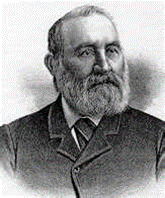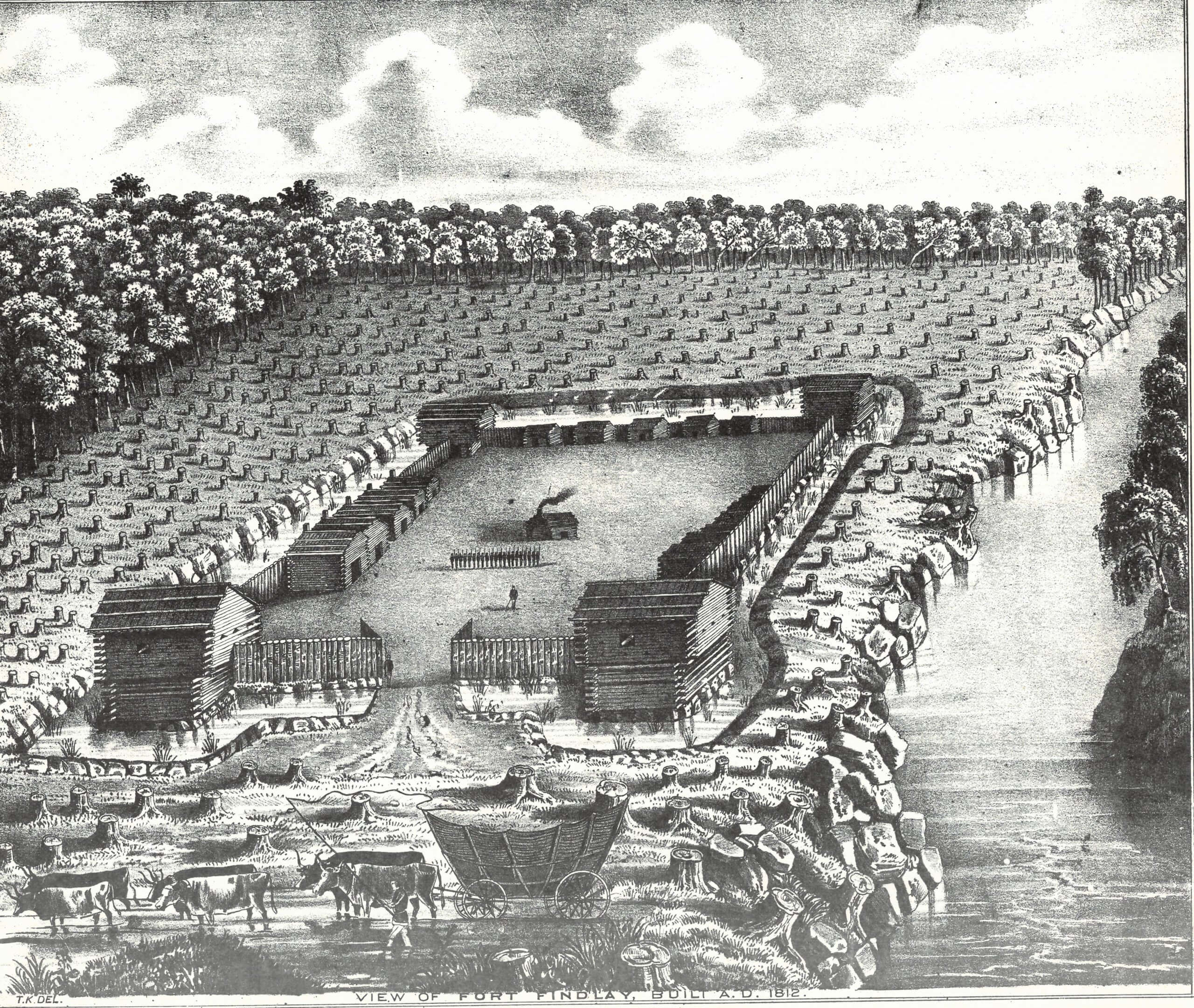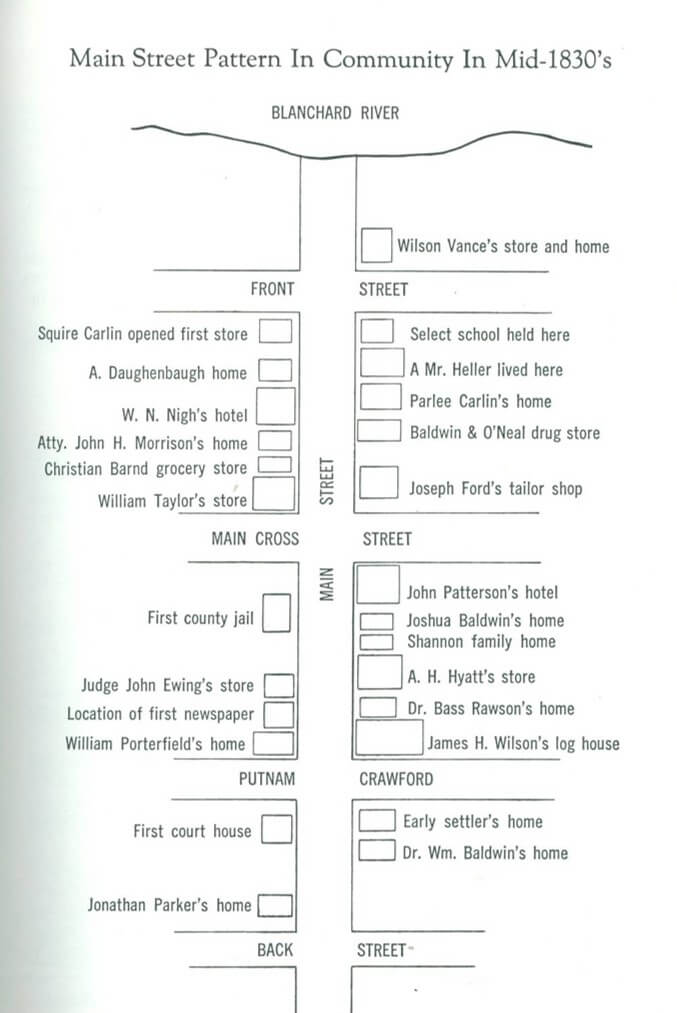Be sure to catch Pat’s first installment exploring Findlay and Hancock County’s history here.
The first permanent family to settle in Findlay was the Benjamin Cox family moving in around 1825.

Benjamin Cox and his family were the first white, permanent settlers in Findlay
Mr. Cox chose to occupy one of the block houses that remained in the remains of the fort. The view from their humble abode was an expanse of underbrush hemmed in by the forest along with tree stumps leftover from the building of the fort.

Their home was one of the buildings that remained from Fort Findlay
Wilson Vance was the next settler and he occupied the other block house. As more settlers arrived, they had to build their own shelters. There was a simplicity to the lives of the early settlers and they became used to a hard life with very few comforts. Food was not a problem as game was plentiful. Corn and potatoes were planted and a few families raised hogs. Wilson Vance was responsible for laying out the town of Findlay which contained less than one square mile. According to the plat he drew up, the town went north and south from Front to Back Street and east and west from East Main Street to West Main Street. (Back Street eventually became Sandusky Street. )
It is interesting that after Mr. Vance platted Findlay. he enlarged his cabin by erecting an addition and opened a tavern. This became the local point where people could talk and drink. It was also a place that lured the hunters, trappers and travelers and was an ideal spot for picking up local gossip. The tavern was also the place to post special notices.
Stay tuned for the next installment tracking Findlay and Hancock County’s history!
This blog post was written by Visit Findlay blogger Pat Bauman. Pat is a Findlay history buff, author, mom and grandmother. That isn’t much, is it? Learn more about Pat and read her other blog posts here!
Thank you to the Hancock Historical Museum for the use of your photos!



